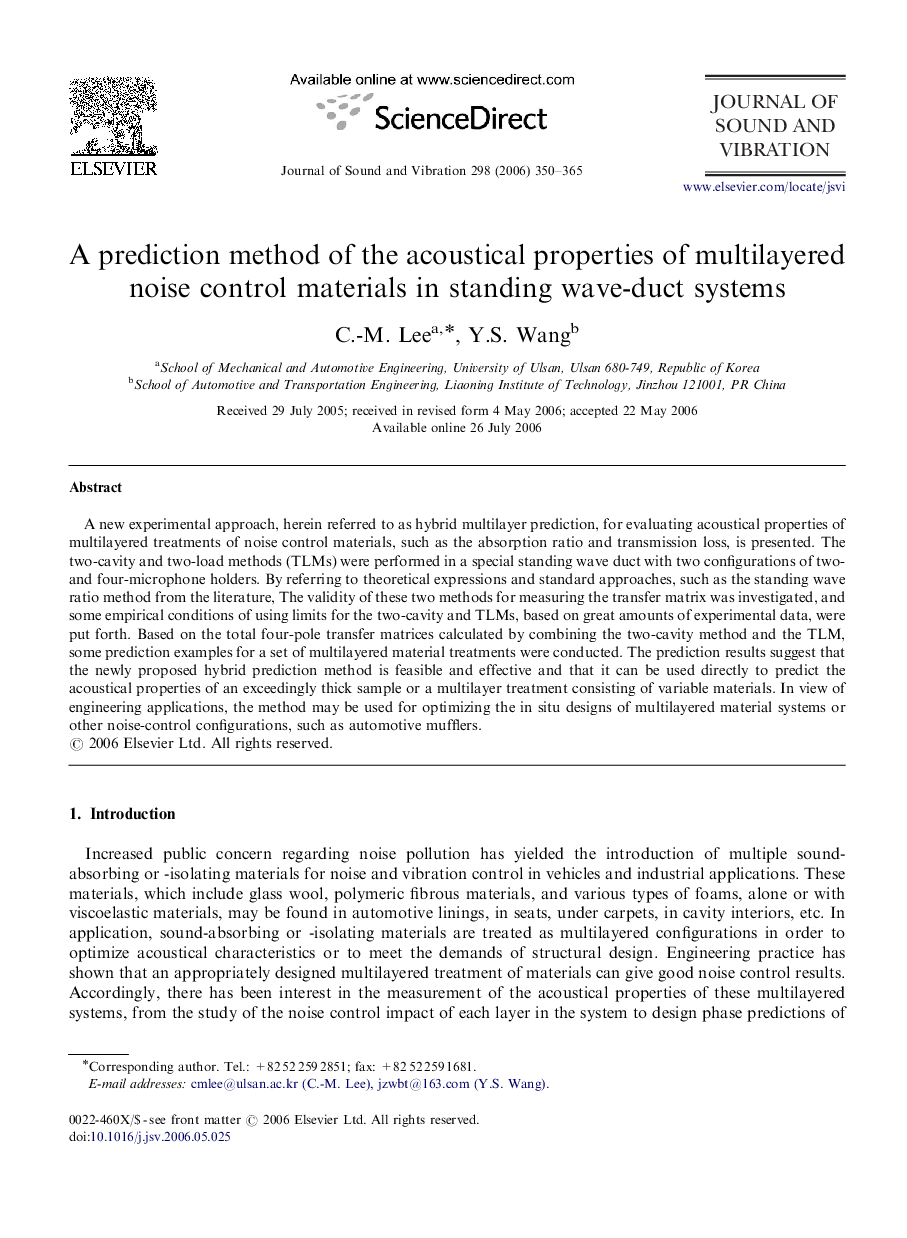| Article ID | Journal | Published Year | Pages | File Type |
|---|---|---|---|---|
| 290671 | Journal of Sound and Vibration | 2006 | 16 Pages |
A new experimental approach, herein referred to as hybrid multilayer prediction, for evaluating acoustical properties of multilayered treatments of noise control materials, such as the absorption ratio and transmission loss, is presented. The two-cavity and two-load methods (TLMs) were performed in a special standing wave duct with two configurations of two- and four-microphone holders. By referring to theoretical expressions and standard approaches, such as the standing wave ratio method from the literature, The validity of these two methods for measuring the transfer matrix was investigated, and some empirical conditions of using limits for the two-cavity and TLMs, based on great amounts of experimental data, were put forth. Based on the total four-pole transfer matrices calculated by combining the two-cavity method and the TLM, some prediction examples for a set of multilayered material treatments were conducted. The prediction results suggest that the newly proposed hybrid prediction method is feasible and effective and that it can be used directly to predict the acoustical properties of an exceedingly thick sample or a multilayer treatment consisting of variable materials. In view of engineering applications, the method may be used for optimizing the in situ designs of multilayered material systems or other noise-control configurations, such as automotive mufflers.
